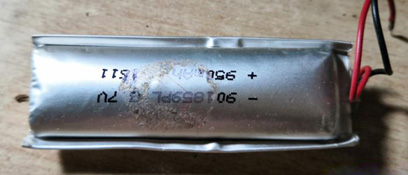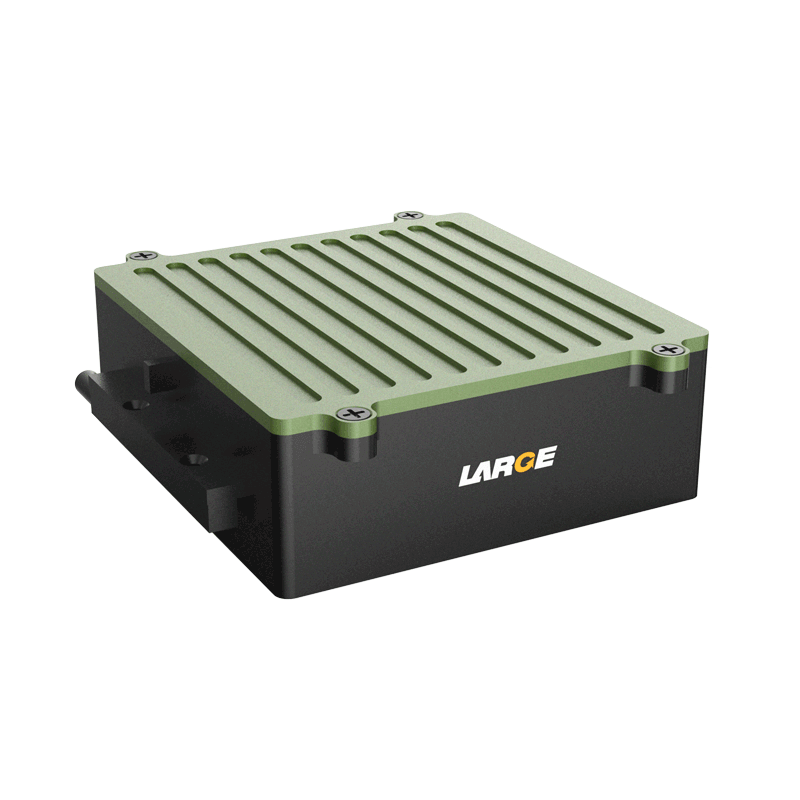How To Fix Swollen LiPo Batteries?
Sep 14, 2020 Pageview:7300
Those who make use of Lipo batteries will most likely come across a swollen or probably a puffy looking battery.
While most people wonder what to do next while staring at their swollen LiPo battery, it is vital to note that swollen LiPo is dangerous. There are so many reported cases of swollen batteries starting a fire.
However, not all swollen batteries will explode, but it still does not mean that people can make use of them.
Many people have asked how to fix swollen LiPo batteries; the answer remains it cannot be fixed but rather be disposed of as quickly as possible. LiPO Batteries Maintain and LIPO Battery Safety Tips can help you use lithium polymer battery more safely.

Many people have asked how to fix swollen LiPo batteries; the answer remains it cannot be fixed but rather be disposed of as quickly as possible. Another question pertaining to swollen LiPo batteries has to do with the cause of the batteries to swell up.
Basically, gas production in lithium-ion batteries is regular. It does not matter if you abuse your battery or not; the regular daily use of the said battery can produce gas via a process known as electrolyte decomposition.
This electrolyte decomposition happens rapidly if the battery is overcharged or there is overheating of the battery.
Swollen LiPo Battery Disposal
Generally, the first thing to do about swollen batteries from LiPo is to dispose of it carefully and quickly purchase a new one.
Swollen batteries can take place as a result of several reasons ranging from an overcharge or puncturing.
Furthermore, when individuals notice swollen batteries, it is highly safe to stop making use of it and throw it all away.
The LiPo batteries can be protectively disposed of with the traditional battery disposal service or possibly thrown in the bin so far they are discharged completely. However, there are other ways to dispose of the swollen LiPo battery such as;
· Check through the yellow pages to see if there is any local battery disposal service around as it is the easiest way to dispose of the battery
· There is also homemade battery disposal.
This entails draining the battery to 0V because lithium polymer batteries are secure if they do not carry any voltage. Next step is to take a bucket filled with sand and place the battery inside while outside.
Link either a led or small lamp to this battery and fully drain it as it is left connected for 24 hours. When the led stops glowing, one can cut off the connectors from the battery. The wires should be stripped as well as the black and red wires are joined to build a short circuit and stop any voltage build up. With the LiPo battery safely stabilized, one can safely place it in the common trash.
· Some people either shoot or nail their batteries. Though this is intriguing, it is not advisable.
All in all, any technique for disposing of the LiPo battery is safe so far it is carried out outside the home.
LiPo Battery Explosion
The lithium polymer batteries are likely the most dangerous aspects to be dealt with on a daily basis.
This has to do with its propensity to explode into little fireballs when maltreated basically, and due to the huge volume of power, they can drop out from the terminals.
LiPo battery explosions are simple to understand. The lithium ion in the LiPo hates being exposed to air.
All the explosions take place for a particular reason which centers around the cells in each pack getting punctured or somehow ruptured and exposing the innards to air.
The violent nature of the explosions will rely solely on the amount of electrical charge the battery actually has. Simply put, in a completely charged battery, its reactive elements are vulnerable to harsh chemical reactions whenever they are exposed to air.
So, when the battery is actually discharged, the same exact elements are kept in a decreased exothermic cocktail. Basically, overcharging is another way for the batteries to explode.
This overcharging takes place when an increased voltage is implemented all over the cells of a LiPo battery. A voltage higher than 4.2V will likely result in a chemical reaction that cannot be reversed.
This, in turn, will generate both gas and heat. The battery will then begin swelling, and the only next step is to explode. Also, overcharging can take place when a person tries to charge the battery faster than it can accept that particular charge.
Meanwhile, the best approach to protect the battery against issues of overcharging is to have a constant habit for charging that protects everyone from executing mistakes when charging the LiPo.
As for punctures, it could occur due to a serious crash or a general mishandling of the battery. The batteries will explode at once and probably chain the good cells during this process.
Best LiPo Battery Protection
There are battery producers like Dinogy that make battery packs with fiberglass protective layers on both sides of the battery. This helps to provide compelling protection from any form of an explosion caused by punctures.
However, it is vital to make use of LiPo compatible chargers for the LiPo batteries. This because the batteries demand special care and they charge by making use of a system known as CC/CV charging.
This basically stands for Constant Current/ Constant Voltage. The chargers will help to keep the charge rate or current constant till the battery attains its highest voltage which is 4.2v per cell.
With the LiPo compatible charger, the LiPo batteries are balanced to make sure every cell discharges exactly the same amount. It will help in the performance of the battery. It is also important for safety purposes.

Final Thoughts
In using LiPo batteries, it does not matter the likelihood of fire not occurring; every user must take safety precautions. Users should have a fire extinguisher around them. Though the extinguisher will not put off the fire, it will simply help to stop it from spreading.
LiPo batteries can as well be charged in fire-resistant containers although most users would rather purchase LiPo bags. LiPo batteries should never be left to charge without the user checking on them.
- Prev Article: How Many Cells Are In A Lithium Battery?
- Next Article: Can You Overcharge a Li ion battery?
Leave Message
Hottest Categories
-
Hottest Industry News
-
Latest Industry News











